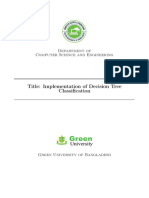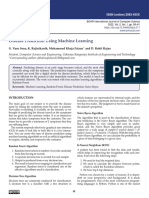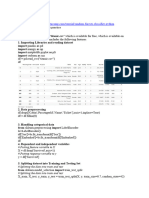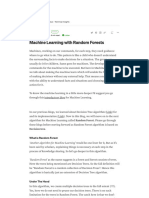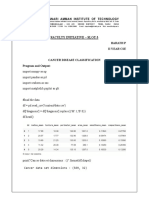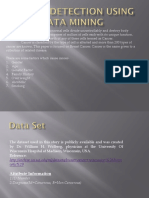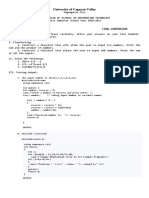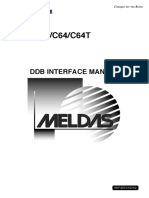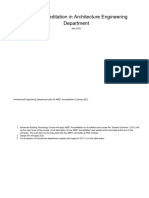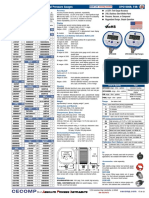0% found this document useful (0 votes)
18 views4 pagesDecision Tree Code Explanation
The document explains the process of implementing a Decision Tree Classifier using the breast cancer dataset. It covers importing necessary libraries, loading the dataset, splitting the data into training and testing sets, training the model, making predictions, calculating accuracy, testing on a single sample, and visualizing the decision tree. The decision tree operates by asking a series of yes/no questions based on tumor characteristics to classify samples as malignant or benign.
Uploaded by
prajwalcg3Copyright
© © All Rights Reserved
We take content rights seriously. If you suspect this is your content, claim it here.
Available Formats
Download as PDF, TXT or read online on Scribd
0% found this document useful (0 votes)
18 views4 pagesDecision Tree Code Explanation
The document explains the process of implementing a Decision Tree Classifier using the breast cancer dataset. It covers importing necessary libraries, loading the dataset, splitting the data into training and testing sets, training the model, making predictions, calculating accuracy, testing on a single sample, and visualizing the decision tree. The decision tree operates by asking a series of yes/no questions based on tumor characteristics to classify samples as malignant or benign.
Uploaded by
prajwalcg3Copyright
© © All Rights Reserved
We take content rights seriously. If you suspect this is your content, claim it here.
Available Formats
Download as PDF, TXT or read online on Scribd
/ 4





















